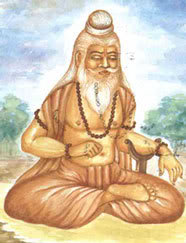 For thousands of years, India has been home to saints and sages who have plummed the inner depths of the soul and attained the heights of human consciousness. The spiritual history of India contained in the Vedas, the oldest known record of human experience on earth, contains a wealth of information regarding the mechanics of spiritual development. The Vedic rishis turned their attention within and through meditation discovered in the inner silence a vast storehouse of wisdom.
For thousands of years, India has been home to saints and sages who have plummed the inner depths of the soul and attained the heights of human consciousness. The spiritual history of India contained in the Vedas, the oldest known record of human experience on earth, contains a wealth of information regarding the mechanics of spiritual development. The Vedic rishis turned their attention within and through meditation discovered in the inner silence a vast storehouse of wisdom.
In the 1800’s, India’s spiritual treasure began to become known in the West. This was largely due to the pioneering work of spiritual explorers like Madame Blavatsky, Nicholas and Helena Roerich, Alexandra David-Neel, Lama Anagarika Govinda and W.Y. Evans-Wenz. These Europeans traveled throughout Asia, often enduring extreme hardship, in order to discover the Light of Asia and bring it back to a Europe that was just beginning to emerge from the ignorance and repression of the Dark Ages. We owe an extreme debt of gratitude to those courageous spiritual explorers who opened the door to the East and paved the way for what is now commonly referred to in the West as the New Age.
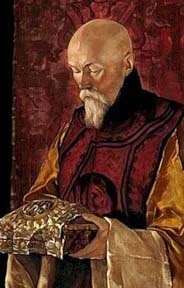 After being introduced to the spiritual teachings of the East by Madame Blavatsky and the Theosophical Society, Nicholas and Helena Roerich traveled for three years through India, Nepal, Ladakh, Tibet, China and Mongolia. During this time Nicholas painted thousands of paintings of the Himalayas, visited numerous temples and met with spiritual teachers. One of their major interests was the discovery the the spiritual kingdom of Shambala. The Roerichs founded the Urusvati Institute in the Kulu Valley, in the foothills of the Himalayas, in order to conduct research on Asian culture, herbs and spiritual traditions. They also founded the Agni Yoga Society to bring the messages of the Masters of the East to the world.
After being introduced to the spiritual teachings of the East by Madame Blavatsky and the Theosophical Society, Nicholas and Helena Roerich traveled for three years through India, Nepal, Ladakh, Tibet, China and Mongolia. During this time Nicholas painted thousands of paintings of the Himalayas, visited numerous temples and met with spiritual teachers. One of their major interests was the discovery the the spiritual kingdom of Shambala. The Roerichs founded the Urusvati Institute in the Kulu Valley, in the foothills of the Himalayas, in order to conduct research on Asian culture, herbs and spiritual traditions. They also founded the Agni Yoga Society to bring the messages of the Masters of the East to the world.
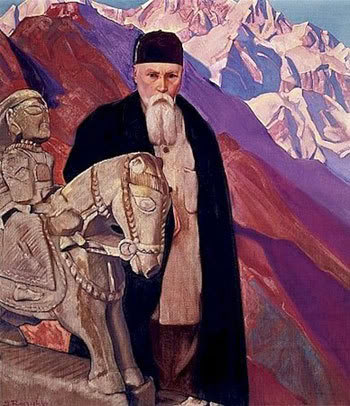 One of Nicholas Roerich’s greatest achievements was the creation of the Roerich Peace Pact which was signed by the leaders of India, the Baltic states, and 22 nations of the Americas including the United States. These leaders pledged to protect cultural institutions in the event of war. This treaty, which was signed in 1935, is international law today.
One of Nicholas Roerich’s greatest achievements was the creation of the Roerich Peace Pact which was signed by the leaders of India, the Baltic states, and 22 nations of the Americas including the United States. These leaders pledged to protect cultural institutions in the event of war. This treaty, which was signed in 1935, is international law today.
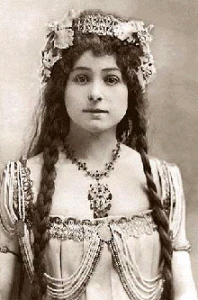 Alexandra David-Neel is one of the most interesting women in the history of the world. She was born on October 24, 1868. Her birth name was Louise Eugenie Alexandrine Marie David. By the age of 18, she was already expressing her strong urge for freedom and exploration and had already visited England, Switzerland and Spain on her own. A major turning point in her life, as well as the Roerich’s, came when she began studying in Madame Blavatsky’s Theosophical Society.
Alexandra David-Neel is one of the most interesting women in the history of the world. She was born on October 24, 1868. Her birth name was Louise Eugenie Alexandrine Marie David. By the age of 18, she was already expressing her strong urge for freedom and exploration and had already visited England, Switzerland and Spain on her own. A major turning point in her life, as well as the Roerich’s, came when she began studying in Madame Blavatsky’s Theosophical Society.
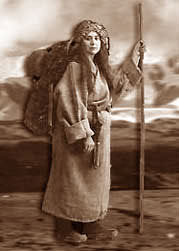 Alexandra David-Néel wrote over 30 books about Eastern religion, philosophy, and her extraordinary travels. Probably her most famous trip was to the Tibetan capital of Lhasa, which was forbidden to Europeans, during which she posed as a Tibetan man on pilgrimage.
Alexandra David-Néel wrote over 30 books about Eastern religion, philosophy, and her extraordinary travels. Probably her most famous trip was to the Tibetan capital of Lhasa, which was forbidden to Europeans, during which she posed as a Tibetan man on pilgrimage.
In 1911 Alexandra traveled to India for the second time, to continue her Buddhist studies. During this trip, she was invited to visit the royal monastery of Sikkim, where she became the close friend of the crown prince.
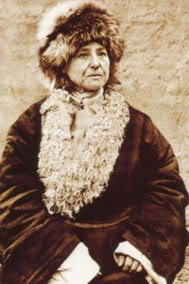 Alexandra also had the distinction of meeting the thirteenth Dalai Lama twice in 1912. During these meetings she had the opportunity to ask him many questions about Buddhism. While this does not seem so special today, when thousands of westerners have the opportunity to meet the Dalai lama, it was unprecedented for a European woman living at that time.
Alexandra also had the distinction of meeting the thirteenth Dalai Lama twice in 1912. During these meetings she had the opportunity to ask him many questions about Buddhism. While this does not seem so special today, when thousands of westerners have the opportunity to meet the Dalai lama, it was unprecedented for a European woman living at that time.
During the period 1914 to 1916, Alexandra lived in a cave in Sikkim, near the Tibetan border. She lived with the young Sikkimese monk named Aphur Yongden. Yongden became her lifelong traveling companion and Alexandra eventually adopted him. Yogden died in 19055. After his death Alexandra continued to study and write till her death at age 100.
 Before the doorway to the East opened, the commonly accepted belief in western society was that Jesus Christ was the only Son of God and that humans, due to original sin, were fallen creatures. However, as westerners became aware of the rich spiritual heritage of Asia, they learned of an ancient tradition, stretching back thousands of years, in which God-realized saints demonstrated the same kinds of miracles that Jesus was reported to have performed.
Before the doorway to the East opened, the commonly accepted belief in western society was that Jesus Christ was the only Son of God and that humans, due to original sin, were fallen creatures. However, as westerners became aware of the rich spiritual heritage of Asia, they learned of an ancient tradition, stretching back thousands of years, in which God-realized saints demonstrated the same kinds of miracles that Jesus was reported to have performed.
The commonly accepted belief in eastern societies was that the state of consciousness attained by enlightened saints was not only possible for all humans to reach but that it was the ultimate purpose of every human being’s life. In addition, rather than there being only one God-man, India had records of numerous avatars, incarnations of God. The Eastern spiritual traditions had preserved for centuries detailed knowledge of highly developed systems and techniques for fully developing human consciousness in order to attain enlightenment and God-realization.
As the spiritual knowledge from the East became more widely known in the West, scholars began to speculate that Jesus may have traveled to India, during what are referred to as “the lost years of Jesus,” and that he may have studied the yogic sciences under masters there. Fueling interest in these theories were reports that records existed in ancient manuscripts, preserved in monasteries in Tibet and Ladahk, that described a great miracle master from the middle-east named Issa, and the many wonders that he performed during his travels in India and the Himalayas.
We are at a turning point in the history of spirituality on this planet. The spiritual pioneers of the 1800’s, who searched throughout Asia for the Wisdom of the East, brought back what they learned and planted those seeds in the soil of the West. For decades, westerners with the assistance of eastern masters have been cultivating those seeds. They are about to bear fruit. We are on the verge of a great harvest.














Speak Your Mind